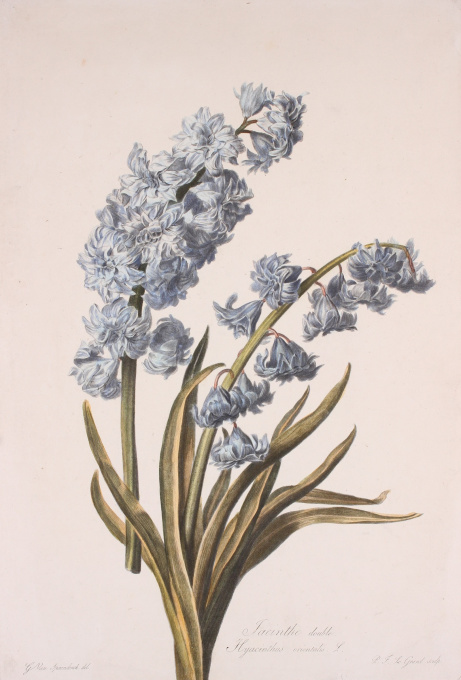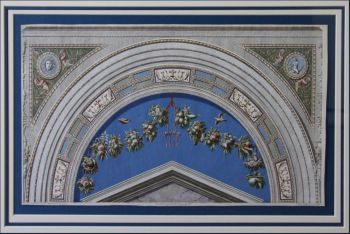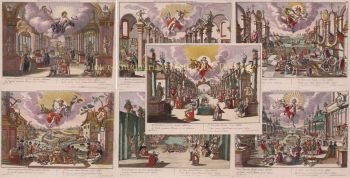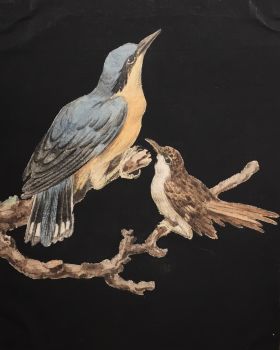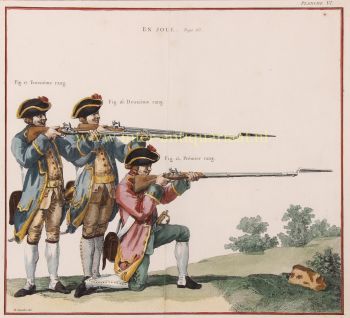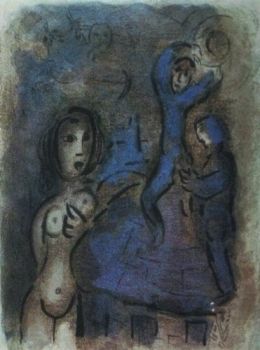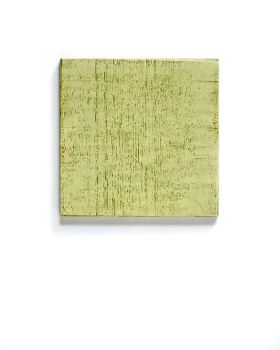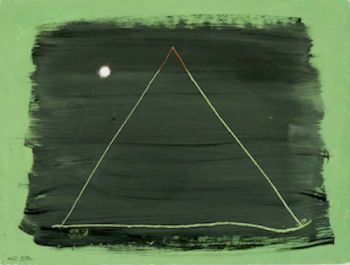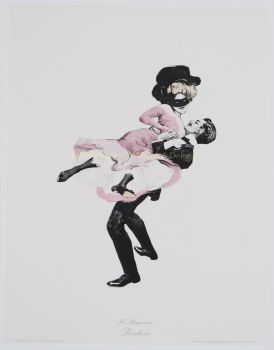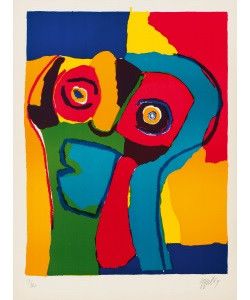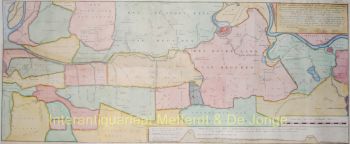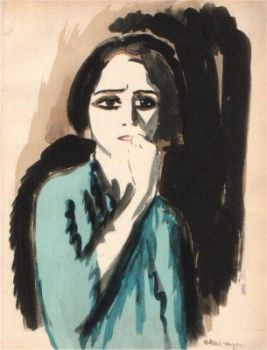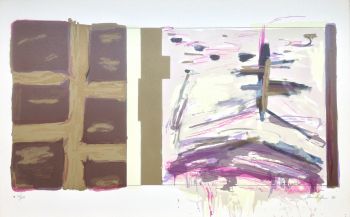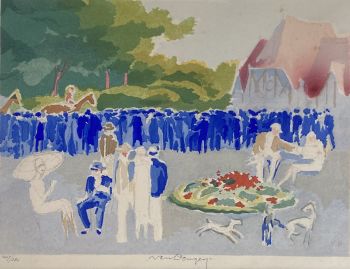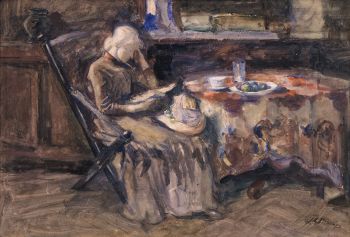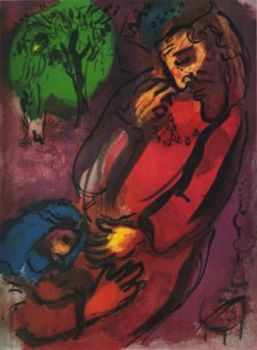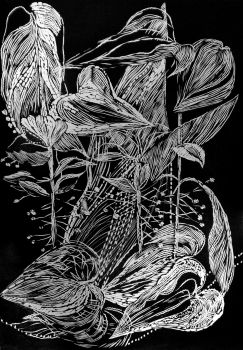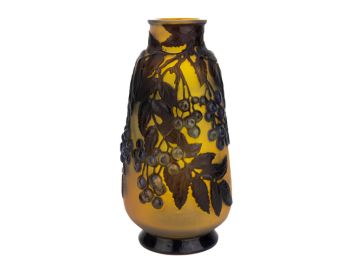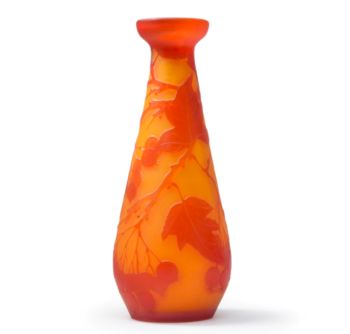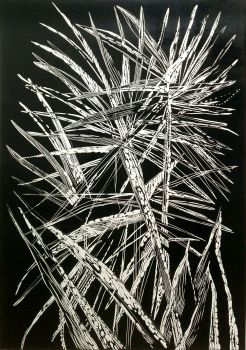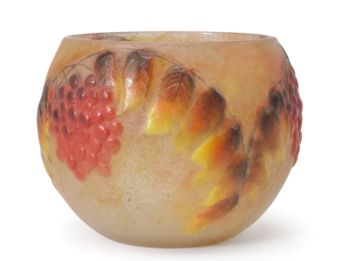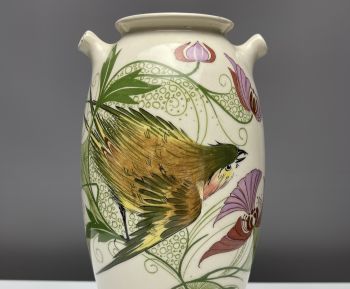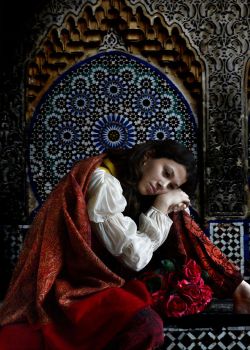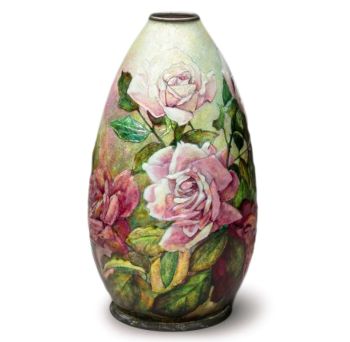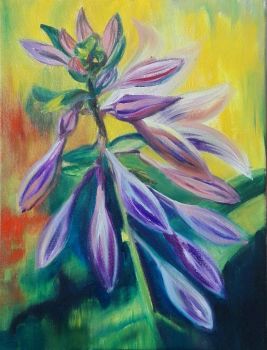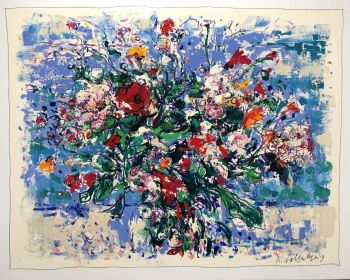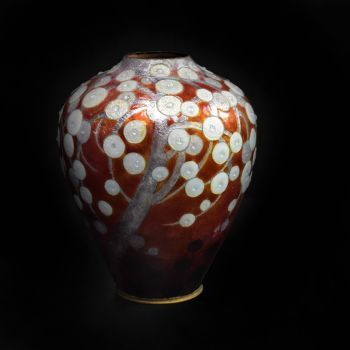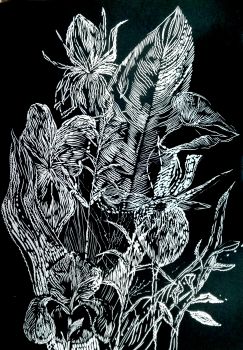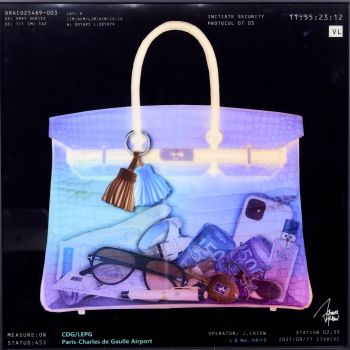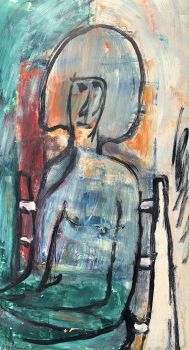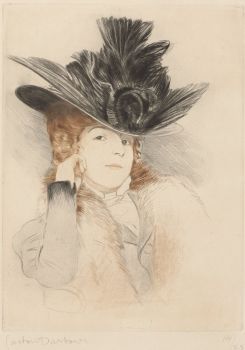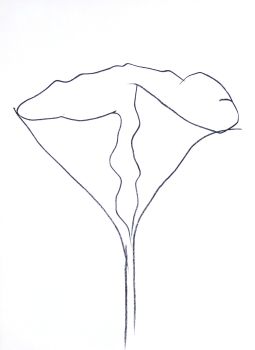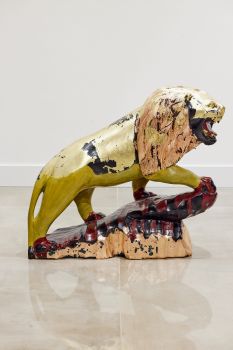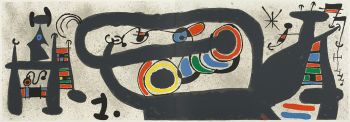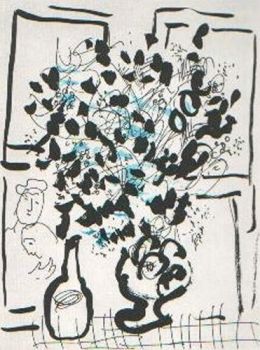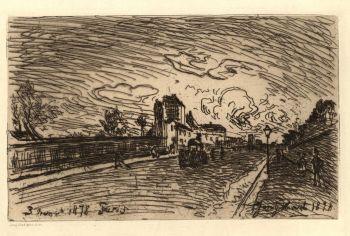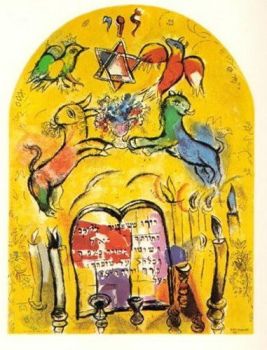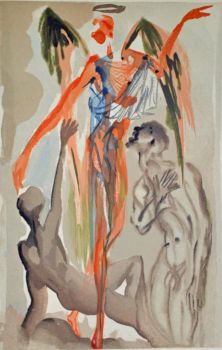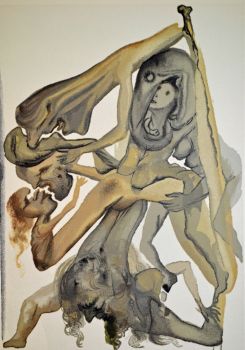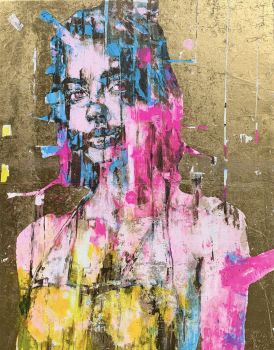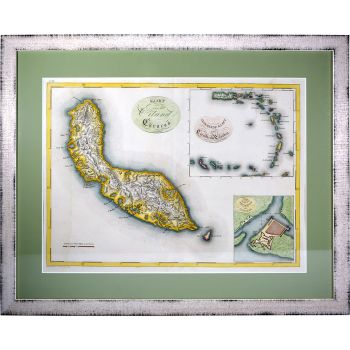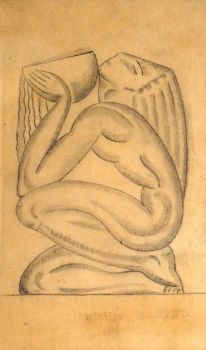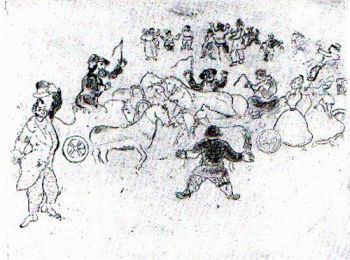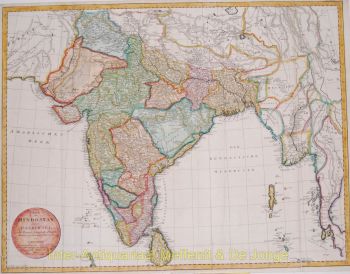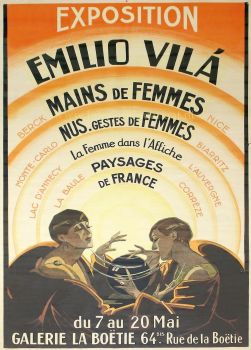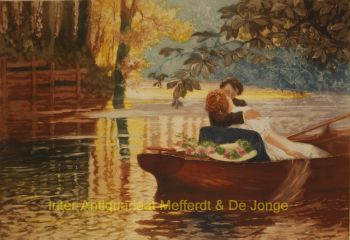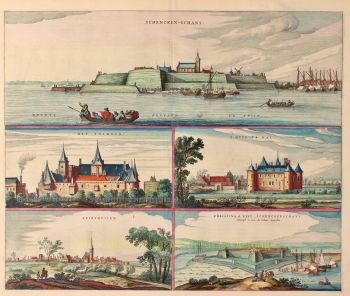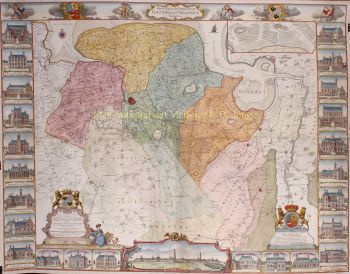Dutch hyacinth 1799 - 1801
Gerard van Spaendonck
PapierImprimer
50 ⨯ 33 cm
€ 1.250
Inter-Antiquariaat Mefferdt & De Jonge
- Sur l'oeuvre d'art“Jacinthe double - Hyacinthus orientalis”, stipple engraving made by P.F. le Grand after a drawing by Gerard(us) van Spaendonck from the "Fleurs dessinées d'après nature", published between 1799 and 1801. With original hand colouring. Size (print) approx. 50 x 33 cm. In Greek mythology, Hyacinth was a very beautiful Spartan prince and lover of the god Apollo. Hyacinth was also admired by the God of the West wind Zephyrus. But Hyacinth chose Apollo. With Apollo, Hyacinth visited all of Apollo's sacred lands in the chariot drawn by swans. Apollo taught his lover the use of the bow, of music and the lyre, the art of prophecy, and exercises in the gymnasium. One day, Apollo was teaching him the game of quoit. They decided to have a friendly competition by taking turns to throw the discus. Apollo threw first, with such a strength that the discus slit the clouds in the sky. Hyacinth ran behind it to catch it and impress Apollo, but as the discus hit the ground, it bounced back, hitting Hyacinth's head and wounding him fatally. Alternatively, Zephyrus is held responsible for the death of Hyacinth; jealous that Hyacinth preferred the radiant Apollo, Zephyrus blew Apollo's quoit boisterously off course to kill Hyacinth. Apollo's face turned pale as he held his dying lover in his arms. He used all his medicinal skills and even tried giving ambrosia to heal Hyacinth's wound, but in vain, for he could not cure the wound. When Hyacinth died, Apollo wept, blaming himself. He wished to become a mortal and join his lover in death. However, as that was not possible, Apollo promised that he would always remember Hyacinth in his songs and the music of his lyre. From Hyacinth's spilled blood, he created a flower, the hyacinth, and on its petals inscribed the words of despair, "AI AI" – "alas" Gerard van Spaendonck (1756-1842) studied with decorative painter Willem Jacob Herreyns in Antwerp. In 1769 he moved to Paris, where in 1774 he was appointed miniature painter in the court of Louis XVI. In 1780 he succeeded Madeleine Françoise Basseporte as professor of floral painting at the Jardin des Plantes, and was elected a member of the Académie des beaux-arts shortly afterwards. Van Spaendonck contributed to over fifty works of Les Vélins du Roi, a famous collection of botanical watercolours owned by French royalty. From 1799 to 1801 he published twenty-four plates as part of his Fleurs Dessinees d'apres Nature (Flowers Drawn from Life), which were high-quality engravings for students of floral painting. Today the Fleurs Dessinees d'apres Nature are considered among the best botanical engravings in the world. Stipple engravings with which one is able to differentiate between different tones of gray, turned out to be highly suitable for depicting botanical details, a method that Van Spaendonck also taught his pupil Pierre-Joseph Redouté. Like other famous flower painters, Van Spaendonck was also technically perfect: in oil, watercolour, pen or pencil, on any scale. With attention to every minute detail and elegance and sophistication of the composition, he shows his mastery. Like Jan van Huysum, Van Spaendonck understood the zeitgeist and created flower compositions that matched the taste of the public of around 1800. He combined the traditional Dutch way of representing flowers with French sophistication and good taste. Price: Euro 1.250,-
- Sur l'artiste
Gérard était un frère aîné de Cornelis van Spaendonck (1756-1840), qui était également un peintre bien connu. Dans les années 1760-1769, il étudie à Anvers avec le peintre décorateur Willem Herreyns. En 1769, il s'installe à Paris, et en 1774, par l'intermédiaire de Claude-Henri Watelet, à l'âge de 28 ans, il est nommé peintre miniature à la cour de Louis XVI. Il expose pour la première fois en 1777. En 1780, il succède à Françoise Basseporte (1701-1780) comme professeur de peinture florale au Jardin des Plantes. Peu de temps après, il est élu membre de l'Académie des beaux-arts.
Van Spaendonck a peint à la fois à l'huile et à l'aquarelle. Il a réalisé plus de cinquante œuvres pour les Vélins du Roi, une célèbre collection d'aquarelles botaniques appartenant à la famille royale française. De 1799 à 1801, il publie 24 planches de ses Fleurs Dessinées d'après Nature (Fleurs dessinées d'après nature); gravures de haute qualité pour les étudiants en peinture de fleurs. Aujourd'hui Fleurs dessinées d'après nature est un livre très apprécié dans le domaine de la peinture florale.
En 1788, Van Spaendonck est nommé conseiller de l'Académie et, en 1795, il est l'un des fondateurs de l'Institut de France. En 1804, il est décoré de la Légion d'honneur. Peu de temps après, il est anobli par Napoléon Bonaparte. Van Spaendonck est mort en 1822 à l'âge de 76 ans.
Au Groeseindstraat 99 à Tilburg, une plaque peut être vue à l'endroit où se trouvait la maison natale des frères Van Spaendonck. Outre le peintre Karel Appel, Gerard van Spaendonck est le seul Néerlandais à être enterré au Père Lachaise à Paris. Gérard est juste derrière la tombe de Chopin.
Êtes-vous intéressé par l'achat de cette oeuvre?
Artwork details
Related artworks
- 1 - 1 / 1
- 1 - 4 / 24
- 1 - 4 / 24
Marc Chagall
And Mozes saw the burdens of his Brethren1952 - 1989
Prix sur demandeArthouse Marc Chagall
1 - 4 / 24- 1 - 4 / 12

